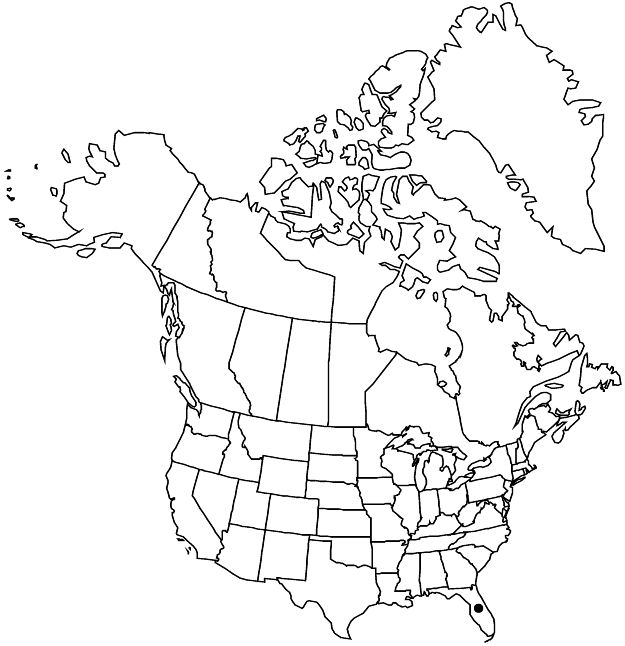Mentzelia floridana
Fl. N. Amer. 1: 533. 1840.
Plants perennial, with caudices. Stems erect, becoming decumbent, to 60 cm. Leaves: petiole to 25 mm; blade usually hastate or ovate, distal sometimes elliptic, basally lobed or unlobed, to 8.4 × 5.5 cm, base usually truncate, sometimes obtusely cuneate, margins usually serrate or dentate to crenate, sometimes entire, apex acute. Pedicels (fruiting) 0.6–4 × less than 1 mm. Flowers: petals creamy yellow to orange, 6.5–13 × 3.5–7 mm, apex cuspidate, hairy on apex; stamens 20–35, 6–11 mm, filaments heteromorphic, 5 outermost narrowly spatulate, inner filiform; style 8–10 mm. Capsules usually lingulate to funnelform, rarely ovoid, 10–18 × 4–5.8 mm, base rounded or cuneate, capsule and pedicel well-differentiated. Seeds (4–)6–8 per capsule, pyriform, without transverse folds. 2n = 20.
Phenology: Flowering Sep–May.
Habitat: Beaches, dunes, sand flats along ocean and rivers, coastal hammocks, disturbed areas, roadsides, shell mounds.
Elevation: 0–10 m.
Distribution

Fla., West Indies (Bahamas).
Discussion
Mentzelia floridana, which is widespread in peninsular Florida, belongs to a clade restricted to the Gulf coastal and Caribbean region; it is most closely related to M. gracilis Urban & Gilg of Mexico and to M. lindheimeri of Texas.
Selected References
None.